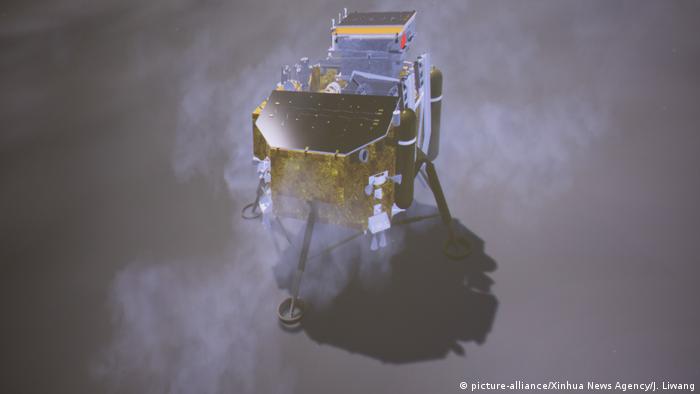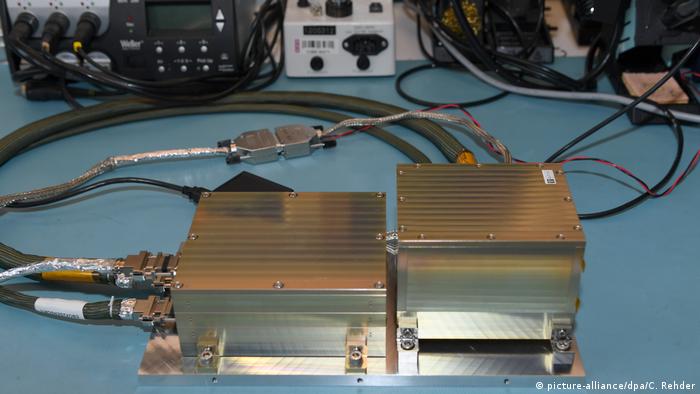專訪:德國專家“怒贊”中國航天
中國成為將探測器送往月球背面的首個國家。此舉意在何為?政治、強權、形象?——德國航天專家洛倫岑(Dirk Lorenzen)表示,這全屬“無稽之談”。他在接受德國之聲採訪時表示,嫦娥四號使命主要與科學有關。
德國之聲:洛倫岑先生,中國使嫦娥四號登陸月球背面,--迄今獨一無二--有何目的,是否僅涉及科學?
洛倫茨:不只出於科學動機。中國當然也想藉此顯示其能力,但它比上世紀六、七十年代的阿波羅使命的政治、形象考量要少得多。我們並非自嫦娥四號才知道中國是一個航天大國。畢竟,中國人15年前就將人送入了太空。
德國之聲:儘管這樣,有一種說法稱,圍繞月球的競爭由此開啟。讀一讀相關的文章或社交媒體上的評論,會得到這樣的印象:歐洲人和美國人迄今低估了中國人。是這樣的嗎?
完全是胡扯。不存在圍繞月球的競爭。中國實施的是一以貫之的自動探測器計劃:先是在月球前面著陸,現在則在背面。中國或許還會在本年底前將月球背面的採樣帶回地球。
不過,說NASA (美國宇航局)和ESA(歐洲宇航局)無所作為,這也不符實。NASA 和ESA聯手建造獵戶座宇宙飛船。這樣,2022年,至少人類將能繞月飛行。當然,有意思的是,何時人類登陸月球。這可能還需要10年。
迄今,共有12人登上過月球,而第13人就可能是一名中國人。不過,這並不是說,其他國家沒把月球當回事。
德國之聲:既如此,說中國主要是在追求自己的利益,使命主要具有像徵意義和政治價值,--這種說法又從何而來?
社交媒體上站不住腳的論點如何自我強化,這便是一個典型的例子。首先,說其他人不飛月球,這並不正確。其二,該使命也不僅僅是為示強。中方甚至還讓國際夥伴參與呢。
基爾(Kiel)的克里斯蒂安·阿爾布萊希特大學(Christian-Albrechts-Universität)的一個測量儀也在探測器上。現在,誰若宣稱,其他人全然忽視了月球、中國向大家顯示該怎麼做,那他顯然不了解其他人的月球計劃。
很清楚,中國是想表明,它有何種能力。但他們顯示這一點,主要還是為了能參與未來國際使命。迄今,根據美國人的授意,中國人被排除在國際空間站項目之外。
不久前我曾與NASA負責人布里登斯汀(Jim Bridenstine)談到過這一點。他說,NASA會很願意加強與中國的合作,但根據法律,NASA被禁止以正式途徑這麼做。也就是說,在某種程度上,美國人迫使中國進入了這一角色:我們先要顯示自己的能力,從而使這一禁令或許會有所鬆動。
德國之聲:印度人也有了自己的航天計劃。您如何估計他們的雄心和能力呢?
印度迄今限於從空間對地球作觀察及通信。現在,他們也加強了在科學上的投入。他們先還得積累經驗。他們還沒有真正宏大的目標,他們先要學習,如何在太空工作。
印度不是中國真正的競爭者,因為,中國人明顯地要更加鍥而不捨。印度有一個很漂亮的科學計劃,但還缺乏中國人的水平。
With its Chang’e 4 landing, China has eclipsed US and Russian achievements. Expect them to take fresh interest in the moon, says Mary Dejevsky, a former foreign correspondent
Chang'e-4 lunar far side mission to carry microsatellites for pioneering astronomy
China's two-launch Chang'e-4 mission to the far side of the Moon will include a pair of microsatellites to be placed in lunar orbit to test low frequency radio astronomy and space-based interferometry.
The pair, unofficially named DSLWP-A1 and DSLWP-A2, have a mass of about 45 kg each with dimensions of 50 x 50 x 40 cm and will launch along with a relay satellite in May or June this year.
Equipped with low frequency antennae and receivers, the astronomy objectives of DSLWP-A1 and A2 will be to observe the sky at the very low frequency part of the electromagnetic spectrum (1MHz-30MHz), corresponding to wavelengths of 300m-10m, with the aim of learning about energetic phenomena from celestial sources.
The primary aim of this first launch of the Chang'e-4 mission involves placing a relay satellite in a halo orbit at the second Earth-Moon Lagrange point beyond the Moon, from which it will facilitate communications with the Chang'e-4 lander and rover, which will be sent to the lunar far side in December.
The satellite is necessary as the far side of the Moon never faces the Earth due to 'tidal locking', and so transmitting data requires an Earth-Moon relay. This complexity is one reason the Chang'e-4 mission will be the first ever attempt at a soft-landing on the far side of the Moon.
The two microsatellites take advantage of extra space on the launch and will tag along for the journey to the Moon.
Low frequency radio astronomy
The pair of microsatellites will fly in formation at variable distances of 1-10 km in an unspecified, elliptical lunar orbit, testing space-based interferometry, which will allow for high angular resolution observations, by matching up radio waves collected by the pair from the same source at what is calculated to be the same time.
Due to the Earth's ionosphere, observations at these low frequencies is very hard, with almost nothing known about the sky in this frequency range.
This could bring unprecedented insights into the dark ages of the universe and transient astronomical events, such as supernovae and gamma ray bursts
The findings could therefore be tremendous, but the mission is only a test for potential future projects.
“As there are many limits on the preparation time, payload mass, power and communication bandwidth, the present mission is more an experiment, but what we learn from this could be very useful for the design of future missions,” says Chen Xuelei, of National Astronomical Observatory of China under the Chinese Academy of Sciences (CAS).
"Many astronomers around the world had proposed to observe at this low frequency range from space, and now we are proud that Chang'e-4 mission will give us the opportunity to make the first peek of the heaven in this frequency range," Chen says, adding that the team also look forward to collaborations with international colleagues on the low frequency radio astronomy.

Launch configuration of the Chang'e-4 DSLWP microsatellites.
DSLWP stands for 'Discovering the Sky at Longest Wavelengths Pathfinder', but the pair are likely to receive new names before launch.
A similar, larger scale mission, DSL, was proposed as a joint CAS-European Space Agency mission, but the SMILE mission was selected from the candidates.
Amateur astronomy, international payloads
DSLWP-A1 will carry an amateur radio payload developed by students at the Harbin Institute of Technology (HIT) in northeast China, allowing telecommand uplink and telemetry and digital image downlink. An open telecommand is also designed to allow amateurs to send commands to take and download an image.
DSLWP-A2 will carry a microcamera developed by the King Abdulaziz City for Science and Technology (KACST) of Saudi Arabia, one of the four international partners providing payloads for the Chang'e-4 mission.
Sweden, Germany and the Netherlands are all also involved in the mission, with a student outreach-inspired mini ecosystem, including potatoes, arabidopsis seeds and silkworm eggs, among the Chang'e-4 payloads.
The relay satellite is expected to be launched on a Long March 4C launch vehicle from the Xichang Satellite Launch Centre in Sichuan Province, southwest China in May or June.
The Chang'e-4 lander and rover, based on the Chang'e-3 mission spacecraft, will also launch from Xichang, aboard a Long March 3B, in December.

The Long March 3B launch of China's Chang'e-3 lunar landing mission in December 2013.
A soft-landing on the far side of the Moon has never been attempted, though a US Decadal Survey has highlighted the significance of such a mission.
The candidate landing sites for the lander and rover are within the South Pole–Aitken basin, a huge crater that may include lunar mantle excavated by the impact that formed it and thus offer unique insights into the interior of the Moon, what it is made of and how it formed.

The Chang'e-3 lander on Mare Imbrium, imaged by the Yutu rover.





沒有留言:
張貼留言